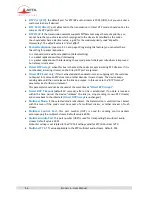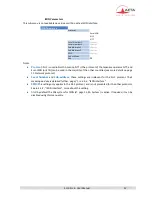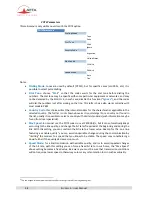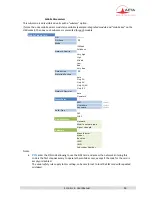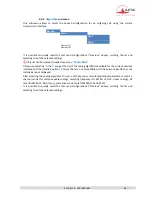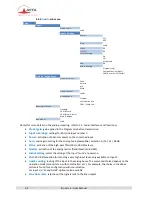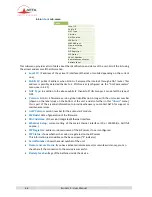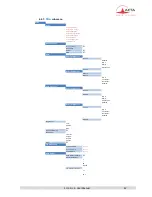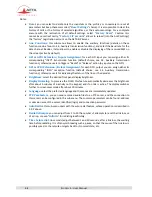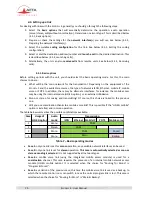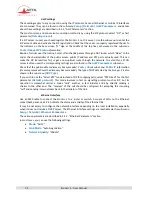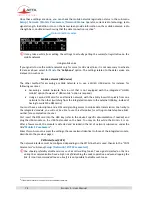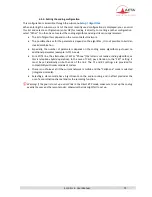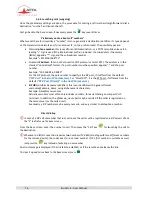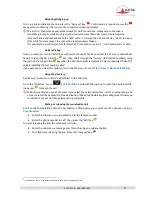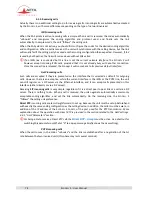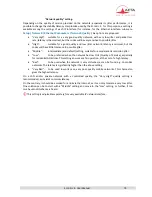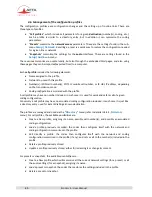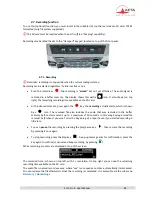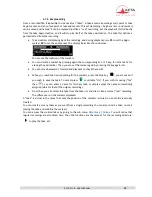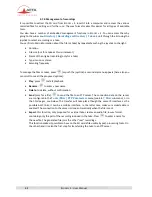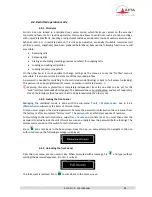
70
S
COOPY
+ S - User Manual
4.5.
Setting up a link
For dealing with links with the S
COOPY
+ S, generally you should go through the following steps:
1.
Select the
basic options
that will essentially determine the operation: audio operation
(mono/stereo, with/without coordination), transmission network type. This is described below
(4.5.1, Basic options).
2.
Prepare or check the settings for the
network interface
(s) you will use. See below (4.5.2,
Preparing the network interface(s)).
3.
Select the suitable
coding configuration
for the link. See below (4.5.3, Setting the coding
configuration).
4.
Select or dial the destination address/number and
launch a call
to the desired destination. This
is described below (4.5.4, Launching calls).
5.
Alternatively, the unit can also
receive calls
from remote units. See below (4.5.5, Receiving
calls).
4.5.1.
Basic options
Before setting up links with the unit, you should select the basic operating mode. For this, the main
choices to do are:
What will be the main network for the transmission? Depending on the equipment of the
S
COOPY
+ S and the available resources, the type of network is ISDN, Ethernet, mobile IP, mobile
voice or POTS. In addition, there may be alternate interfaces: for instance, the mobile access
may be using the internal module (HD-4G option), or an external USB device.
Mono or stereo for mixing and transmitting? Of course, this choice is linked to the previous
one.
Will you use coordination thanks to a mobile voice link? This is possible if the "HD-4G mobile"
option is installed, and in mono operation.
The table below summarizes the possible combinations available:
Table 7 – Basic operating modes
Case 1:
only one link is set for
mono
operation; any available network interface can be used.
Case 2:
only one link is set for
stereo
operation.
This case is automatically selected as soon as
stereo encoding is selected.
It is not supported by all network types.
Case 3
: a mobile voice link (using the integrated mobile access module) is used for a
coordination
channel. This case requires the presence of an internal mobile network access
module (HD-4G mobile option). It is selected when the choice for "Routing for Mono" is
"Program & Coord.".
Case 4
: a variation of the previous case; this time the mobile voice link is used as a backup, to
which the remote control room can switch in case the normal program link is lost. This case is
selected when the choice for "Routing for Mono" is "Main & Backup".
ISDN
Ethernet Mobile IP
POTS
Mobile voice
1
-
Mono
2
-
Stereo
3
Mono
Coord
4
Mono
Backup
PGM
Main
Case
Usage of
HD-4G option
Audio
mode
Transmission
PGM
PGM

